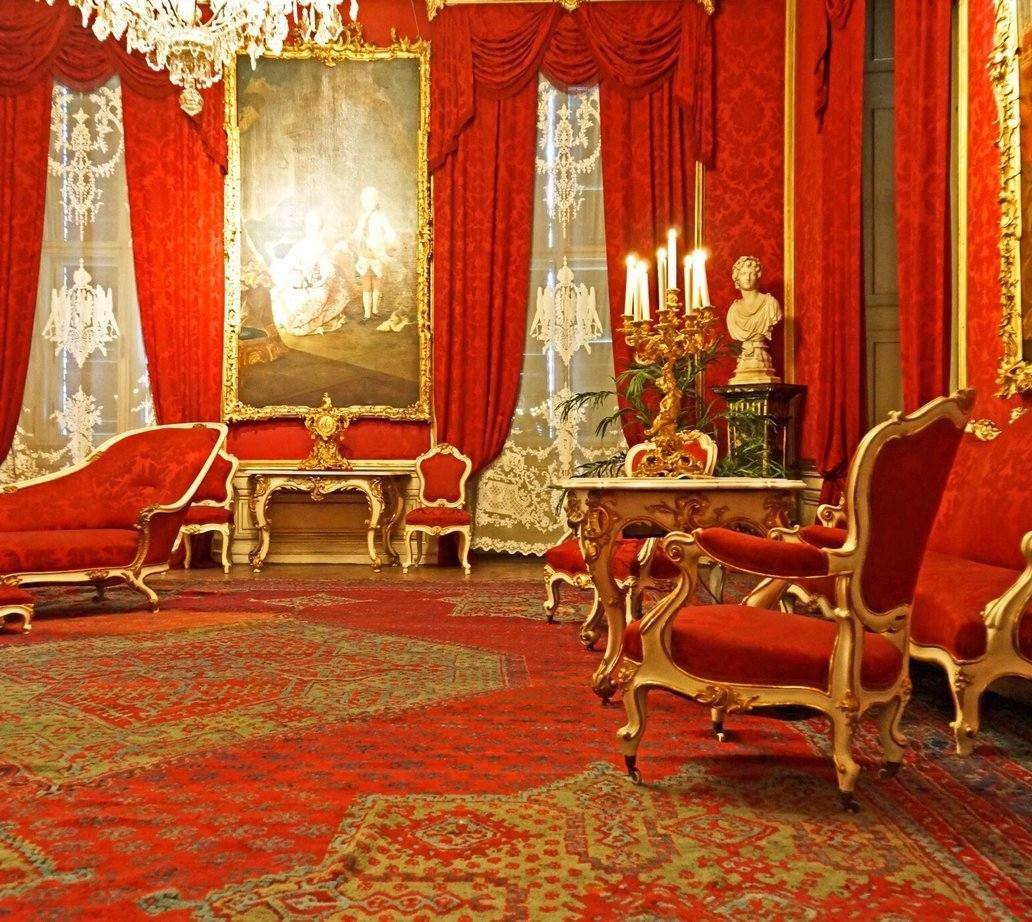A Look Inside the Schönbrunn Palace
One of the most beautiful Baroque complexes in Europe, Schönbrunn Palace used to be the summer residence of Habsburg rulers up until the 1950s, when it was transformed into the major tourist attraction we know it as today. The regal palace and vast gardens span over 300 years of history, reflecting the progressive interests, tastes and aspirations of successive Habsburg monarchs.
While the complex is staggeringly impressive from the outside, the inside of Schönbrunn Palace is even more spectacular and is something you absolutely shouldn’t miss while visiting Vienna.
Overview of the Schönbrunn Palace tours
There are 1,441 rooms within the Schönbrunn Palace, so it’s impossible to see them all in one go. Thankfully, there are three guided tours which point you in the right direction and show you the highlights of the palace without getting lost.
- The Grand Tour covers 40 rooms, including Franz Joseph’s Bedroom and the Marie Antoinette Room
- The Imperial Tour covers 29 rooms, including the Great Gallery and Hall of Ceremonies
- The Ground Floor Rooms Tour (available by prior booking only) covers the three private apartments of the imperial family
Highlights of the Schönbrunn Palace

Credit: Dennis Jarvis from Halifax, Canada [CC BY-SA 2.0]
Apartments of Emperor Franz Joseph and his wife Sisi
Lavishly furnished in 19th-century style, the rooms within these apartments include the Emperor’s Audience Chamberand the popular Walnut Room, named so because it features rich walnut paneling which dates back to 1766. One of the highlights of this stunning room is a delicate candelabra carved entirely out of wood and covered in magnificent gold.
Unsurprisingly, Franz Joseph’s Bedroomis another fascinating place within the palace to visit. Although contrary to what you might expect, it’s a relatively minimalist room which contains the simple soldier’s bed in which Franz Joseph died, following his 68-year reign. Also noteworthy is Empress Elisabeth’s Salon, where you’ll find beautiful pastel portraits of her children painted by artist Jean-Etienne Liotard.
Bergl Rooms
The Bergl Roomson the ground floor of the palace are some of the most charming rooms Maria Theresa ever occupied. The most captivating aspect of these rooms are the impressive murals ranging from exotic landscapes to formal Baroque gardens which grace the walls. Bohemian artist Johann Wenzel Bergl was given the task of decorating the rooms, which he did with great success. To give you an idea of how much work went into these masterpieces, it took him a staggering nine years between 1769 and 1778 to finish the job.
The Marie Antoinette Room
During Sisi’s time, the Marie Antoinette Room was used as a dining room. Today, you can see the table laid out for a family dinner, complete with genuine Viennese porcelain, court silverware and exquisite crystal glasses. The atmosphere was less formal when the imperial family dined here alone and conversation was permitted across the table — something which would never be allowed at a formal dinner.
The Yellow Salon
The name of this garden-facing room reveals the secrets you’ll find within! The Yellow Salon was refurbished several times throughout the palace’s history, ultimately being decorated in the Rococo Revival style which was prominent in the latter half of the 19th century. Highlights within this room include a white marble clock gifted by Napoleon III to Franz Joseph I and the striking yellow furniture decorated with intricate flowers.
The Breakfast Cabinet
The fabulous breakfast cabinet features gorgeous floral medallions which, according to the diary of Count Zinzendorf who visited the palace in 1761, were created by the mother of Maria Theresa — Elisabeth Christine.
Credit: Dennis Jarvis on Flickr[CC BY-SA 2.0]
The Great Gallery
Spanning more than 40m in length and almost 10m in width, the Great Gallery was the ideal place to hold important court functions. From the mid 18th century onward, it was used for all kinds of glamorous balls, receptions and banquet halls. And with incredible chandeliers, glittering gold accents and a beautiful mural ceiling, it’s every bit as incredible today as it was back then.
The best ways to see inside the Schönbrunn Palace
Convinced that it’s definitely worth exploring inside the Schönbrunn Palace? Here are the best ways to discover the remarkable hallways, hidden courtyards and spectacular rooms of the grandiose building.
Vienna Pass
If you’re planning on doing a lot of sightseeing during your trip to Austria’s capital, a Vienna Pass is an absolute must-have. This card saves you oodles of time and money by letting you skip to the front of the queue for all the city’s best attractions without buying a ticket. Free entry to more than 60 sites are covered by the pass, including Schönbrunn Palace, making it incredible value for money.
Sightseeing Package: Vienna Pass & Classical Concert
This package takes the great value and convenience of a Vienna Pass to the next level by combining it with a spectacular classical concert. In addition to all the fantastic attractions, this package also entitles you to a Schönbrunn Palace Concert performed by one of the most incredible orchestras in Vienna.
Get your Sightseeing Package: Vienna Pass & Classical Concert here
Vienna City Tour & Schönbrunn Palace Tour
If you don’t have enough time to spend in Vienna to warrant a Vienna Pass, you can still have a phenomenal time in the city by signing up for a Vienna and Schönbrunn Palace tour. The 3.5 hour tour lets you take in the city’s highlights from the comfort of a state-of-the-art bus. Then when you reach your final destination, the Schönbrunn Palace, you’ll be joined by a guide who will lead you through the historical rooms of Austria’s most popular tourist attraction.
Get your Vienna City Tour & Schönbrunn Palace Morning Tour ticket here
Get your Vienna City Tour & Schönbrunn Palace Evening Tour ticket here
